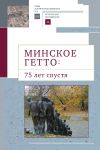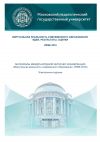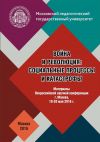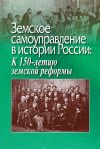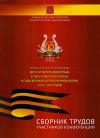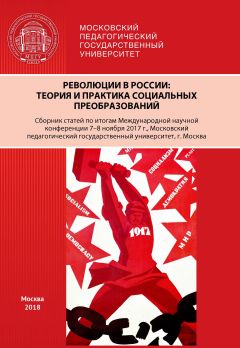
Автор книги: Сборник статей
Жанр: История, Наука и Образование
сообщить о неприемлемом содержимом
Текущая страница: 1 (всего у книги 22 страниц) [доступный отрывок для чтения: 7 страниц]
Революции в России: Теория и практика социальных преобразований Cборник статей по итогам Международной научной конференции (7–8 ноября 2017 г., Московский педагогический государственный университет, г. Москва)
Концепция истории, революция и образы будущего
Ленин о социализме
Крауш Т.
LENIN ON SOCIALISMАннотация. В статье предлагается оригинальный анализ творческого наследия лидера большевистской партии и Советской России В.И. Ленина. Статья акцентирует внимание на вопросах особенно актуальных как в исторической ретроспективе, так и в контексте современного положения в мире. Череда экономических и политических кризисов поставили проблему выбора антикризисных механизмов и альтернативных путей развития человечества. В статье показано, как подобного рода проблемы решались Лениным в условиях Революции 1917 г. и постреволюционного развития. Автор показывает нестандартность и творческий характер ленинских подходов к самым неоднозначным задачам, возникавшим перед советским руководством в условиях Гражданской войны, военного коммунизма и нэпа. Успешность ленинской политики предопределялась тем, что, сохраняя верность основным принципам марксистского учения, Ленин максимально адекватно учитывал характер момента, те изменения, которые происходили в советском обществе. Помимо творческого, динамичного ленинского подхода к решению политических задач, актуальность сохраняет и предложенная Лениным альтернатива капиталистической и авторитарной модели социального устройства, которую он видел в социализме.
Ключевые слова: В.И. Ленин, Октябрьская революция, военный коммунизм, НЭП, государственный капитализм, диктатура пролетариата, переходный период, социализм.
Krausz T.
Abstract. The article offers an original analysis of the creative legacy of the leader of the Bolshevik Party and Soviet Russia V.I. Lenin. The article focuses on issues that are especially relevant both in historical retrospect and in the context of the current situation in the world. The series of economic and political crises posed the problem of choosing anti-crisis mechanisms and alternative ways of human development. The article shows how such problems were solved by Lenin in the conditions of the Revolution of 1917 and post-revolutionary development. The author shows the non-standard and creative character of Lenin's approaches to the most ambiguous tasks that arose before the Soviet leadership in the conditions of the Civil War, War Communism and NEP. The success of Lenin's policy was predetermined by the fact that, while maintaining fidelity to the basic principles of Marxist teaching, Lenin most adequately took into account the nature of the moment, those changes that occurred in Soviet society. In addition to the creative, dynamic Leninist approach to solving political problems, the alternative offered by Lenin to the capitalist and authoritarian model of social order that Lenin saw in socialism, is still essential.
Key words: V.I. Lenin, the October Revolution, War Communism, NEP, Dictatorship of the Proletariat, transition period, socialism.
The original problem of socialism in Soviet Russia
Lenin outlined the whole problem of socialism through the historical development of relations of property and production, according to which the new socialist “communal society” appears in modern history after the dissolution of the ancient communities including of Russia.11
See: Krausz T. Lenin on global history and the global historiography on Lenin. Lecture on the Fifth European Congress on World and Global History (Europen Congress European Network in Universal and Global History (ENIUGH)). 31 August 2017, Corvinus University, Budapest.
[Закрыть] It was a higher form of communal ownership, direct control over workplace through the soviets of workers (historical ancestor: Paris commune 1871).
When Lenin posited his own “three-step” concept in his State and Revolution – in which socialism, as the “lower phase” of communism, is preceded by a “transitional period” – he could not have known that the Russian Revolution would be left isolated. As a result, Soviet development has different periods on economic and political criterias. The three phases following the October Revolution – the “market economy” that characterized the period until spring 1918, the war communism of 1918–1920, and the “state capitalism” of the New Economic Policy (NEP) from March 1921 onward – left substantive and easily outlined theoretical traces in Lenin’s thought.
When Lenin posited his own “three-step” concept in his State and Revolution – in which socialism, as the “lower phase” of communism, is preceded by a “transitional period” – he could not have known that the Russian Revolution would be left on its own. As a result, theoretical socialism as a practical issue would be put off in perpetuity and history would actuate the possibility of socialism in peculiarly Russian form, something he would very much have wanted to avoid.
From market economy to war communism
Central to Lenin’s thinking after October 1917 was how to preserve the hard-won strength: the power of the soviets. In practice this was never separate from the power of his party, which saw it as the political condition upon which continuing soviet power depended. He surveyed the practical possibility of communal-socialist proletarian ends from this point of view. The contradiction, which strained the tortuous daily battles for survival and the end objectives, increasingly set the discrete problems of the so-called transitional period in the forefront. Such was the mass of problems he confronted at the first congress following October. There, he drew attention to the particularity of their revolution, “The situation is misrepresented to make believe that some want to ’introduce’ socialism in Russia by decree, without considering the existing technical level, the great number of small undertakings, or the habits and wishes of the majority of the population.”
In his pamphlet, The Immediate Tasks of the Soviet Government, published on 28 April 1918, Lenin once again raised these same questions, and gradually formed his own position in light of the new situation. The reason he attributed such grave importance to the difficulties caused by the “chaotic” situation was that “the military party, tempted by Russia’s momentary weakness … may gain the upper hand at any moment” in the West.22
Lenin Collected Works (LCW). Vol. 27. P. 237.
[Закрыть] He intended to establish a concrete economic alternative to market-dominated production in an “anarchically built capitalist society” and the “spontaneously growing and expanding national and international market” system,33
Ibid. P. 238.
[Закрыть] but which had not yet overstepped the limitations of the existing “mixed market economy.” True, he had already advocated “the strictest and universal accounting and control of the production and distribution of goods.” Since he spoke about “setting up an extremely intricate and delicate system of new organisational relationships”, whose realization was not merely a technical matter, it is natural that he did not envisage a complete and immediate termination of all market relations as “time is needed” to “convince the people” and “deepen consciousness.” Nevertheless, just such a termination would shortly be implemented under civil war conditions. As the organization of the new method of production and distribution was not proceeding at the required pace and with the expected breadth, Lenin concluded that the capitalist sector would have to remain standing. He said, “If we decided to continue to expropriate capital at the same rate at which we have been doing up to now, we should certainly suffer defeat”, and elsewhere that “the expropriation of the expropriators” is easier than introducing a new system.
He believed that the Red Guard attacks on capital had drawn to a close and the period of “utilising bourgeois specialists by the proletarian state power” had begun.44
Ibid. P. 246, 248.
[Закрыть] He even strayed from every theoretical premise and declared unequivocally that these specialists must be engaged in the service of the new regime with “high remuneration”. Lenin described this “winning over the ‘stars’ of the intelligentsia” as a “step back” and a “partial retreat” when compared with socialist equality.55
Ibid. P. 248–250.
[Закрыть] In the same breath – and with great prescience – he spoke of a certain and inevitable corruption of this system, the weakening of its moral fiber as a sort of natural concomitant of “market economy”. “The corrupting influence of high salaries – both upon the Soviet authorities (especially since the revolution occurred so rapidly that it was impossible to prevent a certain number of adventurers and rogues from getting into positions of authority…) and upon the mass of the workers – is indisputable.” Yet he never found a convincing solution to this contradiction, always thinking in terms of “socialist” and “proletarian” consciousness, because they had not been able to establish “comprehensive control and accounting,” and had “fallen behind with the socialist reforms.” “We have introduced workers’ control as a law, but this law … is only just beginning to penetrate the minds of broad sections of the proletariat.”66
Lenin Collected Works (LCW). Vol. 27. P. 254.
[Закрыть] Essentially, the expansion of state regulation to capitalist production and turnover of goods (to the cooperatives as well) may become a fundamental question regarding financial and market conditions in the “transition leading to socialism”.77
On this, see for example: Dmitrenko V.P. Sovyetskaya ekonomicheskaya politika v pervie godi proletarskoy diktaturi [Soviet economic policy in the first years of the dictatorship of the proletariat]. Moscow: Nauka, 1986. P. 21–29.
[Закрыть]
A virtually unnoticed shift took place within this political framework toward war-communist restrictions of the market economy. Originally instrumental in defending against foreign capital and establishing independence internally, the state monopoly on grain (introduced by the Provisional Government’s law of 25 March 1917) was followed by plans for both a state monopoly on foreign trade and a property tax, as a way of “supplementing” the budget.88
Production for the market and directly for state requirements raised the issues of disciplined work and remuneration. The Council of Labor Unions introduced strict rules of conduct at state-owned enterprises in April 1918, and after the October Revolution performance-based pay replaced work hours–based pay, meaning that a quarter of the workers at the companies in Petrograd received performance-based pay by July. LCW. Vol. 27. P. 583. See also: Szamuely L. Az első szocialista gazdasági mechanizmusok. Közgazdasági és Jogi Könyvkiadу. Budapest, 1971; Krausz T. Szocializmus-képek a huszas években. Átmeneti korszak és szocializmus // Világosság. 1984. № 4. P. 202–210.
[Закрыть] At the same time, in The Impending Catastrophe, he drew a clear line between state control of the bourgeoisie and the expropriation of private property that applied to the bourgeoisie, even arguing against expropriation in this specific case:
If nationalisation of the banks is so often confused with the confiscation of private property, it is the bourgeois press which has an interest in deceiving the public… Whoever owned fifteen rubles on a savings account would continue to be the owner of fifteen rubles after the nationalisation of the banks; and whoever had fifteen million rubles would continue after the nationalisation of the banks to have fifteen million rubles in the form of shares, bonds, bills, commercial certifi cates and so on.99
LCW. Vol. 25. P. 330.
[Закрыть]
The purpose of nationalization was to oversee the financial and economic processes, the actual collection of personal income taxes, etc. Lenin contrasted reactionary-bourgeois regulation to revolutionary democratic regulation, with bottom-up control, with whose limitations he soon came face-to-face. He had already stipulated that the construction of the most modern heavy industry would require state-of-the-art technical-technological progress, to apply “much of what is scientific and progressive in the Taylor system; we must make wages correspond to the total amount of goods turned out, or to the amount of work done by the railways, the water transport system, etc., etc.” Lenin thought that the feasibility of socialism depended on the successes that could be achieved in the field of “combining Soviet power and the Soviet organisation of administration with the up-to-date achievements of capitalism.”1010
Ibid. Vol. 27. P. 259.
[Закрыть] Apart from the cooperation and competition of economic sectors and modes of production, Lenin also spoke about the “competition of communes,” and etched out its moral driving forces more clearly than its material and economic bases. In contrast to the “allowances” made to market and financial conditions and the “bourgeois cooperatives,” the “socialist state can arise only as a network of producers’ and consumers’ communes, which conscientiously keep account of their production and consumption, economise on labour, and steadily raise the productivity of labour, thus making it possible to reduce the working day to seven, six and even fewer hours.”
Lenin had taken note of this, and by the spring of 1918, famine ravaged the cities On his initiative, the Council of People’s Commissars introduced the “dictatorship of state subsistence,” the formation of the poor peasant committees. Many writers tend to wax theoretical about these spontaneous measures, as if Lenin had ventured upon these in line with a concept he had invented earlier; on some theoretical basis; or even with the assumption that some sort of special socialism or theoretical model could be erected on the basis of these actions. In fact, a political turn was outlined in May 1918, leading from a state-supervised mixed market economy to a dictatorship of state subsistence that swept spontaneously toward war communism. The latter, in the beginning, was determined and validated by the internal armed counterrevolution and interventionist military attacks.
On the other hand the conditions of war communism brought the notions of “transitional period” and “socialism” too close to each other in theoretical terms. Bukharin and Preobrazhensky’s The ABC of Communism gave a theoretical basis to the conflation of war communism (as a relatively integrated sequence of economic policy measures) and the realization of socialism as such. The work was a curious mixture of the mutually exclusive ideas of Soviet labor self-government and state socialism. These two famous Bolshevik writers attempted to “translate” the Marxist conception of socialism into the reality of war communism. It was as if the first stage of communism, the realization of socialism, was coming into a state of full development, and was able to transcend commodity and finance relations thanks to both unprecedented inflation and the forced measures of war communism:
But it is perfectly plain that we cannot believe State capitalism to be possible unless we also believe in the possibility of the socialist organization of economic life. The only difference between the two systems lies in this, that in one case industry is organized by the bourgeois State, and that in the other case it is organized by the proletarian State.1111
Bukharin N., Preobrazhensky E. The ABC of Communism / Translated from the Russian by Eden and Cedar Paul. Harmondsworth, Middlesex: Penguin Books, 1969. P. 209; in Russian: Bukharin N., Preobrazhenskiy Y. Azbuka kommunizma. Petersburg: Gosizdat Peterburg, 1920. P. 123–125.
[Закрыть]
Left unexplained was that the matter does not simply rest on state power, for in war communism the state as a military force of authority, as a “deterrent to class enemies through dictatorial” power, acted as the mainspring of the economy. This had no roots in any form of Marxist theoretical tradition from Marx’s own time, and even contradicted his period’s idea of socialism. Lenin was not so naive as to identify war communism with “complete socialism,” for he continued to believe that “as long as workers and peasants remain, socialism has not been achieved”.1212
LCW. Vol. 30. P. 506.
[Закрыть] Moreover, he never deduced the concept of equality theoretically from the reality of war communism, using it only to refer to eliminating social class in economic terms, a final and indispensable requirement of the liberation from capital and achieving freedom. Lenin’s real theoretical mistake in 1919–1920 was that he overestimated the possibilities of socialization, of social supervision within the framework of nationalization, and underestimated the inveteracy of the market and money in a regulating role, a fact he later recognized. The “atmosphere” of the epoch, the romantic attitude of the civil war, was also expressed in war communism’s compulsory egalitarianism. The roots of this “primitive” egalitarianism ran deep in Red Army units and partisan brigades engaged in life-and-death combat with the Whites – a phenomenon picked up by innumerable literary works and films. War communism also influenced theory, which interpreted the “system” as socialism, despite that being suggestive of an anachronism – especially in light of the famous thesis of the “semi-state” in State and Revolution (which can be traced back to Marx). There, Lenin was already engaged in a polemical attack on what was a conceptual muddle. He used Engels’ critique of the draft program of Erfurt, which he had handed over to Kautsky in 1891, who published it a decade later in Neue Zeit. This is interesting because the “opportunist wing” of the social democrats had already suggested that the state, in itself, might be able to consolidate socialism. This line of thought incorporated the increased role of the state in modern capitalism. Lenin mentions the concept of “state socialism,” opposed to the revolution and revolutionary socialism, inasmuch as the role of socialism is defined in opposition to the state.
War communism’s focus was on the consolidation of the new military-power hierarchy under civil war conditions, even though it simultaneously exacerbated the economic situation. Meanwhile, Lenin held that socialism, as a system that had reached completion, would only be composed of voluntary associations of economic-productive communities organized from below. It was still a state, though, for “there remains for a time not only bourgeois law, but even the bourgeois state, without the bourgeoisie” in order to defend the “equality of labor” and public property.1313
LCW. Vol. 25. P. 471.
[Закрыть] Lenin differentiated between state and social property even at its inception; before the introduction of war communism, he believed that the productive classes would themselves have to create socialist conditions. War communism was, however, a consistent system of compulsory state-military measures; according to some writers it carried certain traits of the state economic policy of “German war socialism.” Lenin kept the formative theory in sight even while making his most propagandistic political speeches, indicating that until his last day he continued to view the history of the revolution through the lens of Marxist theory (as reconstructed by him).1414
Lenin could not have known that under the decades of “state socialist” and “existing socialist” rule hordes of writers who considered themselves Marxists would mix-and-match state and social property together – arm in arm with the (neo)liberals and neoconservatives. Not to mention the false explanations that have come to the fore since the collapse of state socialism, the most typical and common of which is state socialism being called “communism.”
[Закрыть] Until March 1919, Lenin did not even use the term war communism, and did so afterward mostly in quotation marks. This means that, not just had Lenin not planned “war communism” in either theory or practical political terms, but also that the war communist measures only “coalesced” into a system much later, by the summer of 1919. The “naturalization” of production and distribution, along with the introduction of the ration system and the persecution of private trade, were not a priori economic measures, but sprang from immediate political and social needs.
NEP vs. war communism – irreconcilable contradictions
Just as war communism was not the application of a theory, neither was the NEP the experiment or exercise of one. The Soviet government implemented both war communism and the NEP under the pressure of concrete circumstances, requirements, and needs – without foreseeing its internal or international effects. In both cases their ideologies – the theoretical justification of the “systems” – were developed either parallel to their introduction, or as a follow-up (though war communism incorporated a number of elements from German war economic policy, and the NEP included elements from the “market economy” of the winter and spring of 1918). The NEP meant substituting militarized production – including the ration system, strict state distribution, and the compulsory appropriation of grain – with money and market conditions, reinstituting free trade and introducing taxes in kind. Often forgotten is that, at the same time, the partial reinstatement of capitalist conditions entailed a general social transformation, a restructuring of social classes and groups, and a change in their relationships.
The introduction of a market economy and direct democracy – broadening “workers’ democracy” – also proved to be a contradiction that could not be bridged. Significant segments of the laboring masses became tired of the sacrifices they were called upon to make and were demanding a “loosening of the bolts,” but very few were in possession of the skills required for direct democracy. Lenin later expressed the necessity of the NEP, neatly and self-critically summarizing it at the 11th Party Congress in the spring of 1922: “We must organise things in such a way as to make possible the customary operation of capitalist economy and capitalist exchange, because this is essential for the people”.1515
See: Lenin’s speech at the 11th Congress in March 1922 // LCW. Vol. 33. P. 279.
[Закрыть] One of the main trends of the current historical literature1616
Studies, books, and publications of sources related to the NEP can hardly be followed in recent years. See among more recent works the book under the name of A.N. Yakovlev, and written by colleagues, which contains an extensive large collection of material, Rossiya nepovskaya (Moscow: Noviy hronograf, 2002).
[Закрыть] emphasizes the capitalist market characteristic of the NEP, but also that – with its well-known measures permitting rural wage labor from 1922 onward – the Soviet state integrated social conflicts into the as yet not fully formed “web” of Soviet society, which later threatened instability and inner combustion, and finally had a major role in the later defeat of the NEP.
The period of transition – “state capitalism”
The concept of state capitalism is used in two senses here: on the one hand as a sector of a mixed market economy. On the other it is a term from formation theory denoting the economic method and arrangement for the transitional period and seen as a phase of it. It is a type of “state capitalism,” in quotes, that cannot be found in “any textbooks,” “nor in the writings of Marx and Engels”.
“Soviet state capitalism” – the way Lenin thought of it, and the party congress declared it – was intended to establish the political and cultural preconditions of socialism. This was a matter of serious contention between Lenin and the Mensheviks, Western social democrats, liberals, and others, who doubted the “reasonability of the Bolshevik experiment” while remaining insensitive to its uniqueness. Lenin saw himself as the representative of a historical alternative, in circumstances in which no other reality had materialized on the left. He repeatedly said the originality of the Russian Revolution was that the prerequisites of socialism came into existence not before it – but after.
The theory of socialism and its systemic coherencies
Though the NEP had been “made to last,” theoretical socialism was never struck off Lenin’s agenda, even under the everyday circumstances of market restoration. As he explained it: “Formerly the stumbling block for very many socialists” was how to first subordinate the “concession to the peasant as a trader, or to the principle of private trade,” “for the sake of common interests” only to come around once again in the process to the cooperative as a solution. Though he knew that thinkers and politicians who had been nursed by the market and state looked down upon cooperatives, even “from the standpoint of transition to the new system by means that are the simplest, easiest and most acceptable to the peasant.” He knew that incorporating the whole population in voluntary cooperatives of production and consumption would take an epoch to realize – precisely on account of the absence of the cultural-civilizatorial preconditions – and yet he insisted on posing this problem.1717
“The cooperatives must be granted state loans that are greater, if only by a little, than the loans we grant to private enterprises.” (The cooperative order as socialism.) “But it will take a whole historical epoch to get the entire population into the work of the cooperatives through NEP.” See: Lenin V.I. On Cooperation // LCW. Vol. 33. P. 469–470.
[Закрыть] The precise relationship between cooperatives and socialism that Lenin had in mind becomes clear in the light of his whole approach, the complete coherency of his thoughts. The cooperatives, as he wrote, are the products of capitalism; they are “collective capitalist institutions” in which the future of socialism can be glimpsed. Producers have the opportunity to shape the cooperatives in their own image in the course of a revolutionary reform of state power, similarly to how in the NEP, “when we combine private capitalist enterprises … with enterprises of the consistently socialist type … the question arises about a third type of enterprise, the cooperatives, which were not formally regarded as an independent type differing fundamentally from the others.” He spoke about the possibility of coexisting state socialist and cooperative socialist enterprises, though a differentiation between the two forms of cooperative, state and self-governed, would come due.1818
Ibid. P. 472–473.
[Закрыть] By the mid-1920s, nearly 10 million people had been pooled into state-organized and state-subsidized consumer cooperatives. Lenin marked out explicitly that a shift must be made from the interpretation of socialism previously reached (war communist, state powered, and politicized) to the position of “cooperative socialism”:
Now we are entitled to say that for us the mere growth of cooperation … is identical with the growth of socialism, and at the same time we have to admit that there has been a radical modification in our whole outlook on socialism. The radical modification is this; formerly we placed, and had to place, the main emphasis on the political struggle, on revolution, on winning political power, etc. Now the emphasis is changing and shifting to peaceful, organizational, “cultural” work. I should say that emphasis is shifting to educational work, were it not for our international relations, were it not for the fact that we have to fight for our position on a world scale.1919
LCW. Vol. 33. P. 474.
[Закрыть]
Of course he treated the outlook for real socialism very cautiously on account of the “ridiculously inadequate elements of knowledge, education and training.”
The most comprehensive modern theory of socialism has been published by István Mészáros, who ties his work on capital to the theoretical fundamentals of Marx and Lenin, and links his concept of socialism, not to the concepts of market production, but both looks for and defines these concepts beyond the market and the state – “beyond capital,” in short. The first generation of Soviet ideologues, including Lenin, defined the difference between the state capitalisms under the reign of capital and the dictatorship of the proletariat in that they wielded power in the name of a different class. They consolidated different modes of distribution and ownership, with a preference for different cultural values, marking out different political goals for society. Lenin limited the direct socialist exchange of goods (following war communism) to the state-socialist sector, its fate hanging by the market competition that connected to the capitalist sectors of the NEP and the “state-regulated buying and selling, to the money system”.2020
Ibid. P. 96.
[Закрыть] Contrary to Lenin, Bukharin often defined this “state economy” as socialism, in both the ABC he wrote with Preobrazhensky, and in his Economics of the Transition Period (Ekonomika perekhodnogo perioda). This definition of socialism as state socialism transitioned directly – leaving Lenin out – to the ideological medium of the Stalinist period.
Lenin outlines four potential courses of development during the “state capitalist” phase of the transitional period, which also explains why such a wide variety of movements, both inside and outside of Russia, refer to his ideas. Three of these possibilities remained aligned with the conceptions of socialism (the fourth being the Ustryalov scenario of reversion to capitalism). In the course of time, the three basic trends could be observed not only in political thought and factional struggles, but also in historiography:
1. Intellectual groups, politicians, and thinkers who considered the multisector economy (defined by a state-regulated market and the state overseen by society) of the NEP as socialism – later identified as “market socialists” – who took their inspiration from the late work of Bukharin, although he never actually called a market economy “socialism” (despite counting on the market economy continuing for a long time, even if differently from Lenin).2121
Such a historical interpretation of Lenin can be found in a number of recent publications, among them: Burtin Y. Drugoy sotsializm / Almanakh “Krasniye holmi”. 1999. P. 411–511; as well as Ivanov Y.M. Chuzhoy sredi svoih: Posledniye godi zhizni Lenina. Moscow, 2002.
[Закрыть]2. Stalin and his followers who were called, in this sense, “state socialists” – although it was Lenin who was proclaimed the progenitor of the market reforms of socialism in 1951. In the 1980s, this trend finally merged with the market socialists,2222
Two of my works, both in English, address the transformations “market socialism” went through over historical time. See: Krausz T. Stalin's socialism. Today's debate on socialism: theory, history, politics // Contemporary politics. Vol. 11. № 4 (Dec. 2005). P. 87–106; Krausz T. Perestroika and the redistributation of property in the Soviet Union: political perspectives and historical evidence // Contemporary Politics. Vol. 13. № 1 (March 2007). P. 3–36; as well as, in Hungarian: Krausz T., Bíró Sz. Z. A peresztrojka és tulajdonváltás. Politikai koncepciók és történelmi valóság // Peresztrojka és tulajdonáthelyezés. Tanulmányok és dokumentumok a rendszerváltás történetéből a Szovjetunióban (1985–1991). Budapest: MRI, 2003. P. 52–102; Krausz T., Tütő L. Válaszúton [Crossways] // Politikatudományi Füzetek. 1998. № 7.
[Закрыть] who had earlier been designated “revisionists.” István Mészáros gives a generous summary of the characteristics of market socialism’s nature. Most importantly he unmasks the common motives of social democratic thinking and the Stalinist tradition in their similar “superstitious” way of relating to state and market. Both camps positioned themselves rigidly in opposition to the conversion of state property into communal property. Both the traditional forms of labor division and the power of disposing of surplus value remained within the scope of the detached apparatus. Every experiment that tried to reform this was undermined by the leaders of that party, even though Lenin had founded it with exactly the opposite aim. Though the later forms of market socialism were advertised as reformed state socialism, the first (market socialism) proved to be an evolved state of the second (state socialism), which in the end led to capitalism.2323
See: Mészáros I. Beyond Capital. London: Merlin Press, 1995. P. 823–850.
[Закрыть]3. The conception of socialism founded on autodynamic – self-generating – and needs-based production, direct democracy, cooperative ventures, and the “cooperative system” of producer and consumer collectives, traces back to Lenin’s way of thinking and has a rather extensive historiography to its credit.2424
Apart from István Mészaros’s work, this tradition is also honored in part by the Trotskyist heritage in Western Europe, in part by the Russian “self-governors” who are gathered largely around the journal called Alternativu, which is related in its positions to the Hungarian journal Eszmélet. See also: Krausz T., Tütő L. Önkormányzás vagy az elitek uralma [Self-government or the reign of the elites]. Budapest: Liberter Kiadó, 1995 and Бllamszocializmus. Trotsky, who defended state property as the precondition of socialism even in the 1930s, was later the recipient of sharp criticism from Marxists as well, for becoming a protector of Stalinism. These critics forgot that Trotsky’s precise notion was that it will be easier to socialize Soviet state property in a “revolutionary turn”, than if the bureaucracy and capital alienates state property from those who created it by way of private expropriation. For more on this, see: Krausz T. Szovjet Thermidor: a sztálini fordulat szellemi előzményei (1917–1928). Napvilág, 1996. P. 227–230.
[Закрыть]
Правообладателям!
Данное произведение размещено по согласованию с ООО "ЛитРес" (20% исходного текста). Если размещение книги нарушает чьи-либо права, то сообщите об этом.Читателям!
Оплатили, но не знаете что делать дальше?



